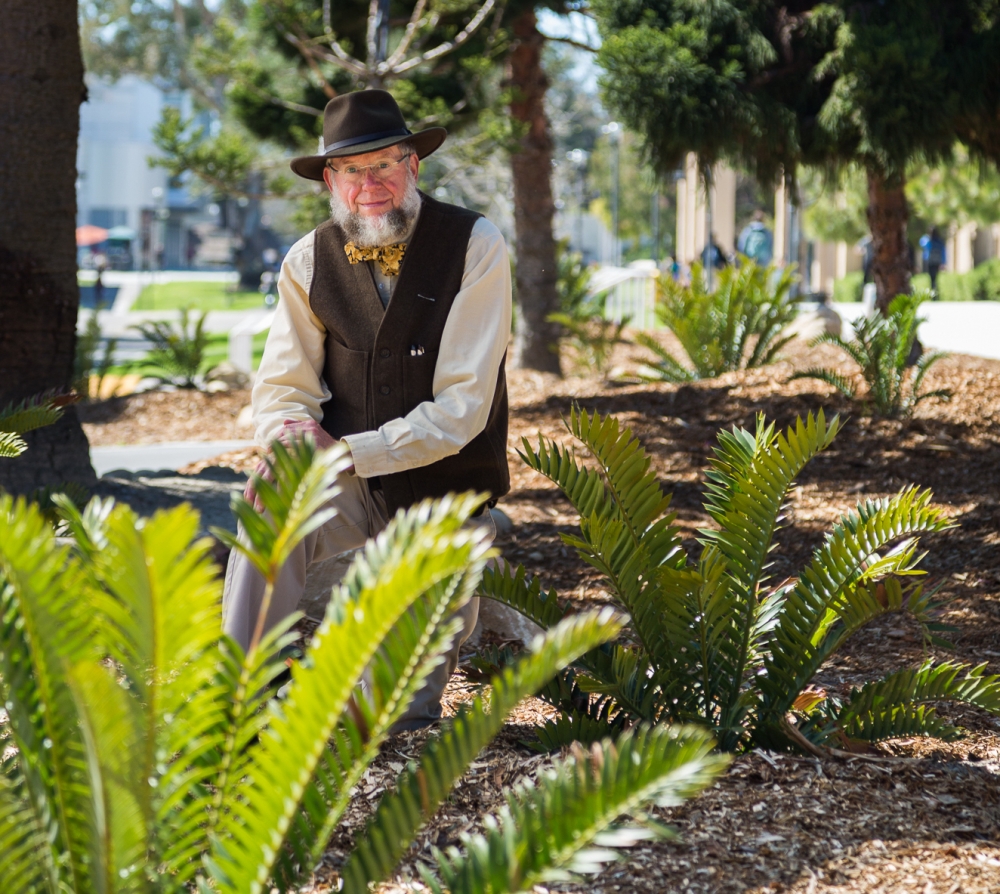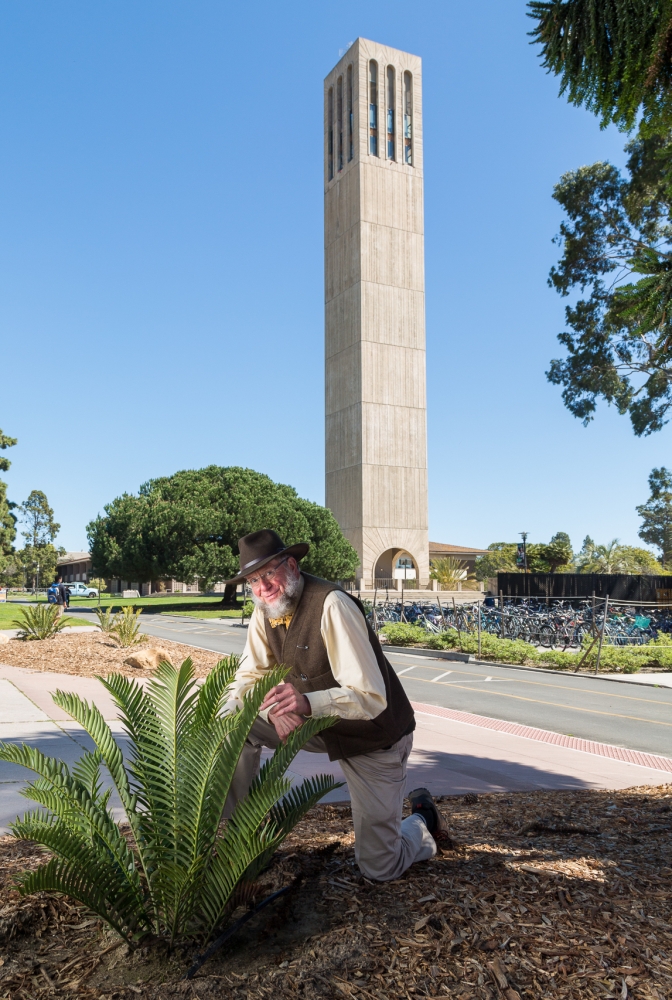Living Fossils
Nothing like cruising campus on your bike and catching sight of a dinosaur. Of course, if it’s not a triceratops in your peripherals but a Jurassic plant, you may zip right on by, oblivious to the ancient wonders rooted on the grounds of a modern university.
Behold UC Santa Barbara’s new installation of cycads, the plants considered “living fossils” that do, in fact, date to dinosaur times. An assemblage of the archaic greenery now adorns a bustling part of campus known as the Pardall corridor. Planted among some existing Araucaria trees — distinctive evergreens that in their own right can be traced to the early Mesozoic age — they are a throwback to our prehistoric past.
“Block out all the buildings, the cement and the people and imagine, if you will, terrestrial dinosaurs roaming right where we’re standing,” said Bruce Tiffney, a professor of earth science and paleobiology at UCSB. “Standing among the cycads you can be transported back 150 million years. It’s a small view of what the Mesozoic might have looked like.”
Tiffney, an evolutionary biologist who specializes in plants and their fossil record, is among the UCSB faculty members who use cycads as a teaching tool (there is a smaller grouping of these plants outside Webb Hall). As part of a course on dinosaurs, for example, students are asked to visit both the cycads and the Araucaria for a glimpse of what their environment might have been like.
“The whole purpose of paleontology, in the broad sense, is to give people an idea of the worlds that have existed in the past, on this planet, only edited for time — and this is a nice little window,” Tiffney said. “Indeed, I suspect botany courses and introductory biology courses will be out here looking at these as well. They’re representatives of a bygone world.”
Beyond their instructional value and their Jurassic flavor, the cycads also bring a big dose of sustainability to the campus that always has environmental efforts in mind. The plants replaced a large swath of grass, now covered in mulch, resulting in water savings (cycads don’t need much) and reduced emissions (mowing not required). With mowing and edging no longer needed, green waste on that part of campus also has decreased.
“Green waste is a big deal,” said Raimond Calderon, superintendent of grounds at UCSB. “The footprint is significantly reduced from all the things that we do when we have a lawn. A lot of savings is achieved. At same time, because we are stewards of the landscape, we’re not taking out lawn just to save money. It’s more about looking at what’s there and what we can do to improve the campus over all.”
The project brought other positive impacts, too, like labor once spent on lawn care being redirected to other needs. But perhaps more significant, according to Calderon: the design, construction and installation of the cycad garden all was completed by campus staff.
“Our professional groundskeepers got a chance to really showcase their skills,” Calderon said. “It took 30 guys on our grounds staff, and everybody contributed. We didn’t contract out, which keeps the work here and allows our team to do something other than routine maintenance. And it builds a nice esprit de corps with the group.”
That feeling extends to local area resident Ron Garber, who donated the retro flora in question. A cycad aficionado and longtime collector, he hybridized two African species of the plant as an experiment — and gifted them to UCSB on something of a lark.
“I decided that since I ride my bike through campus and go right by this area every Sunday, and sometimes also during the week, I could enjoy them planted there, not have to water them, not have to tend to their pruning and care — and lots of other people could enjoy them too,” Garber said. “It was a win, win situation”.
“I am thrilled with the way they look on campus,” he continued. “They especially fit in with the Araucaria trees. The crew did a fantastic job creating a very nice and interestingly contoured environment to display them. These plant should really start to grow now that they are in the ground, and I believe the result will be absolutely stunning in a few years.”





